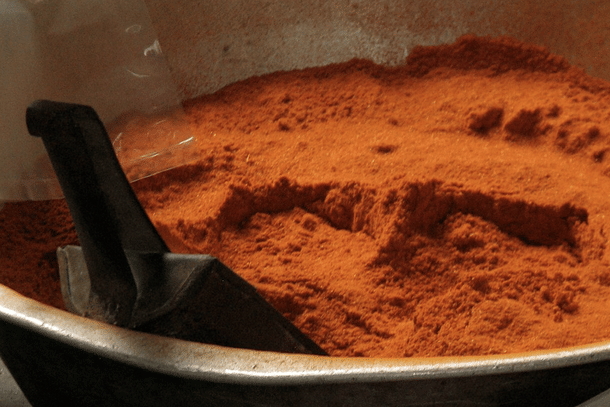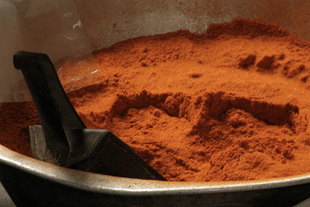Science
Spice Adulteration In India: Concerned Citizens Reveal Findings From Recent Testing
Anonymous Contributor
Sep 15, 2024, 02:23 PM | Updated Oct 03, 2024, 11:24 PM IST
Save & read from anywhere!
Bookmark stories for easy access on any device or the Swarajya app.


India, the land of spices, has been the hub of spice cultivation and trade for centuries. Turmeric, chilli powder, cumin, coriander, and many more are not just culinary staples in Indian households but are also integral to understanding the Indian experience.
Spices have been an essential component of India’s export basket for millennia. It was stated that Vasco De Gama had to sell off everything only to get a pouch of pepper back in the day.
However, the widespread issue of adulteration in spices is threatening both consumer health and the integrity of this industry.
Adulteration, which essentially means the addition of inferior or harmful substances to food products, often to increase weight or volume, reduce costs, or enhance appearance, has been an oft-stated complaint.
Due to their high demand and value, spices are particularly vulnerable to adulteration. Common adulterants include synthetic dyes, starch, artificial colours, and cheaper substitutes like sawdust or brick powder.
While some adulterants are relatively benign (e.g., mixing chilli powder with red brick powder), others pose significant health risks. Synthetic dyes and colours used in adulteration may contain heavy metals like lead and arsenic, which can lead to serious conditions such as cancer, liver damage, or neurological problems over long-term consumption. In addition, adulterated spices lose their essential nutritional value and flavour, compromising culinary quality.
The Food Safety and Standards Authority of India (FSSAI) has laid down strict regulations to curb adulteration, still, the issue remains prevalent due to a lack of effective enforcement, a decentralised spice trade system, and consumer unawareness.
One particular spice in question is turmeric, which is also seen as a ‘miracle spice’ despite some contentious literature in support and against the claims. What is obvious though is the love of turmeric in traditional Indian medical systems, thus making it one of the obvious choices for adulteration and fake products selling in the market. Turmeric powder is often adulterated with lead chromate, which gives it a bright yellow colour but is highly toxic. Sometimes, chalk powder or starch is added to increase volume.
Another recent fight has been on the quantum of pesticides in the spices. While pesticides understandably raise concerns, strict global limits have been established to control exposure levels. Indian spice makers, in particular, had to face the ire of health regulators in certain international markets on the claims of high levels of pesticides being present in them.
The presence of pesticides is a result of farming practices and not the actual process of processing for usage, still, questions are raised on procurement processes and supply chains, which many companies are not necessarily transparent about. Integrated pest management principles are picking pace in the overall Indian agricultural landscape at a slower than desirable pace, and much work is definitely needed there.
Landscape in India, Testing Random Samples
Do all spice brands have the issue of pesticide and heavy metal contamination? To understand the ongoing situation, a group of citizens from across India, including the author here, came together and got random samples of turmeric tested from a quality, reputed laboratory in India which has NABL certifications.
The parameters for which the random samples were tested included commonly used pesticides like Ethylene Oxide (ETO), common adulterants like Lead Chromate, crop contaminants like aflatoxin and heavy metals like arsenic and mercury.
Three of the most popular brands of turmeric were taken up for the test. Three popular brands of turmeric powder, which also have high advertising volumes and publicity behind them, became obvious choices.
Samples were collected from markets and e-commerce platforms in Guwahati and Assam, and tested across a range of parameters. The samples were shipped to Hyderabad, far away from the procurement centre. The procurement and testing were conducted in July 2024. The standards used for testing were essentially the ones as laid down under the Food Safety and Standard Regulation 2011, as laid down by the Food Safety and Standards Authority of India
The results from the tests were rather good. The levels of contaminants across the three brands were significantly within the ranges for all parameters. However, one could notice the presence of one item of concern in one sample — aflatoxin. While all three brands contained it either in traces or within limits, its presence was slightly elevated in one company sample.



Aflatoxin contamination in turmeric occurs due to the growth of certain types of fungi which produce aflatoxins. These fungi thrive in warm and humid environments, common in regions where turmeric is cultivated and processed.
Contamination can occur at multiple stages. For instance, in the pre-harvest stage, aflatoxin-producing fungi can infect turmeric plants in the field. Factors contributing to fungal growth include climatic conditions like high temperature, high humidity, poor soil quality, and pest damage.
In the post-harvest stage, the risk of aflatoxin contamination increases significantly during processing and storage. Non-segregation of contaminated turmeric rhizomes during milling, or contamination during packaging are among the various ways the contamination can occur.
Given the adverse health effects of aflatoxin, including immunity suppression and liver cancer in the long run, there are good enough reasons to have a thorough agricultural and procurement process around it.
There are some simple but effective ways to prevent this problem. Ensuring proper irrigation and drainage systems to prevent excess moisture in the soil, and harvesting of turmeric at the right time to avoid excess moisture retention are ways to minimise the occurrence at the farm level.
Post-harvest, proper drying of turmeric rhizomes immediately after harvest, ideally using mechanical dryers, and storage in cool, dry conditions with proper ventilation to maintain low humidity levels can go a long way in preventing fungal growth.
Citizen Awareness is the Key
The fight against adulteration requires both top-down and grassroots efforts, with government authorities enforcing stringent checks at every stage of spice production and distribution.
Spice traders should adopt modern technologies like machine sorting and testing for contaminants. Finally, consumer education is crucial. Consumers should be aware of the risks of adulterated spices and use available testing methods to ensure the purity of their food.
Adulteration of spices is a serious health hazard, and its detection is critical for consumer safety. Although simple tests can help identify common adulterants, a larger, systemic approach involving regulatory authorities, traders, and consumers is needed to combat this issue. By promoting awareness and vigilance, India can protect the authenticity of its spice industry and ensure the safety of its people.
Indian companies are not entirely to blame for certain types of contamination. Absolving them carte blanche is not the right approach either. Issues can come up with batches too, however, what is important here is the constant push for ensuring proper practices within the industry, a mandate for FSSAI.





